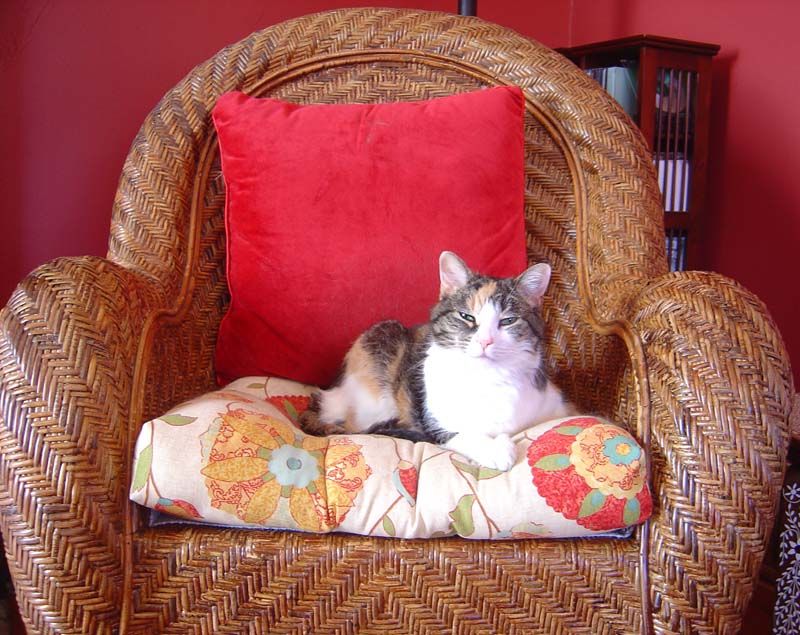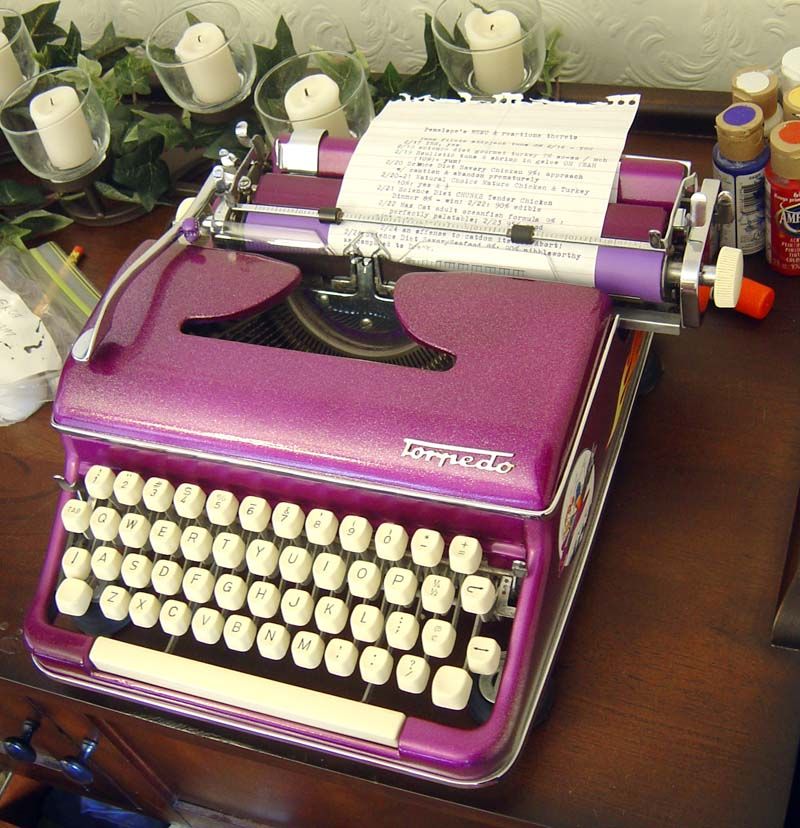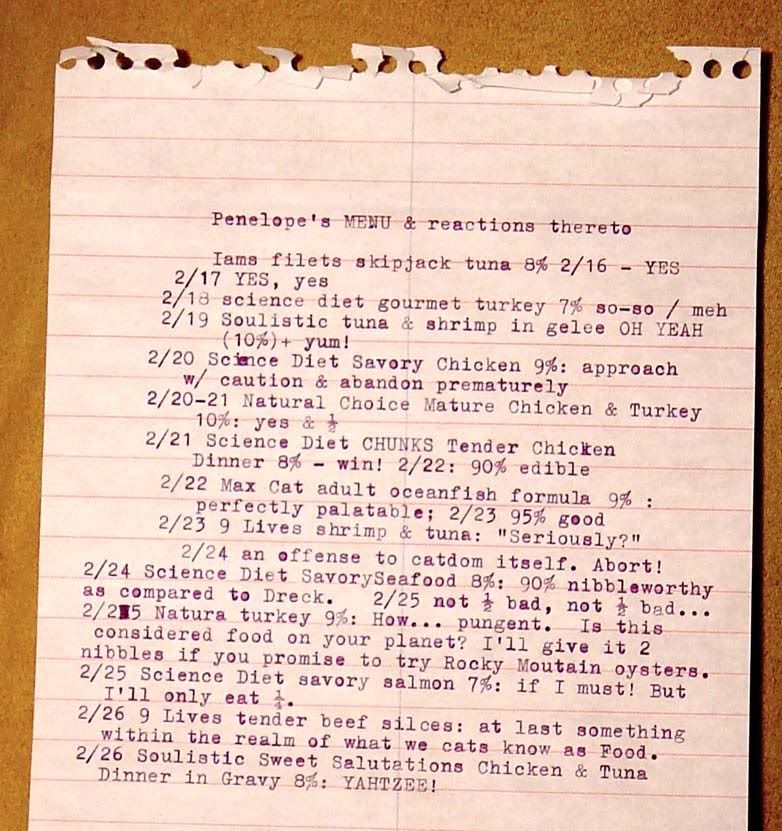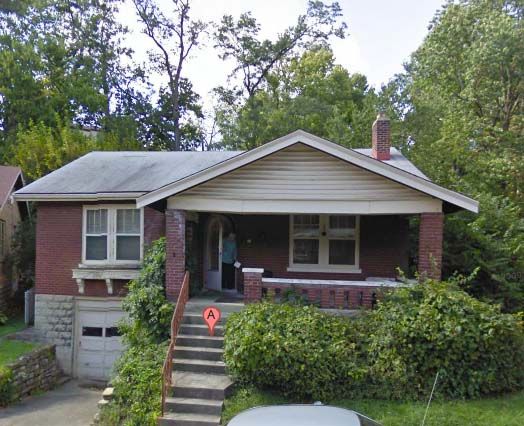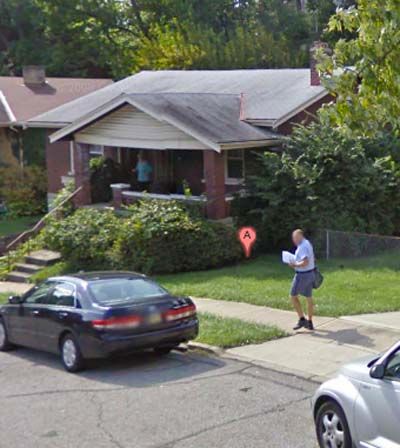Typewriters around Cincinnati seem to have migrated from the thrift stores to the antique malls, picking up bigger price tags in the process. One of the best places to hunt is the huge Ohio Valley Antique Mall in Fairfield, and my visit on Monday included the most typewriter sightings ever. I brought my camera, and just to prove that all the typewriters aren't in Switzerland, I thought I'd share my sightings with the typosphere. Happy International Typewriter Appreciation Month!
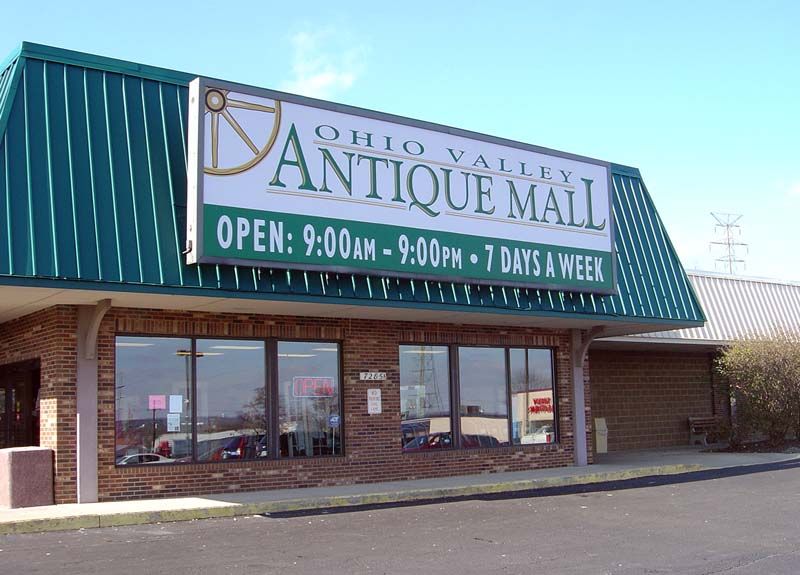
This place takes about half an hour to get through if you're striding fast and paying attention to typewriters only. It's divided up into named "streets" and "avenues."
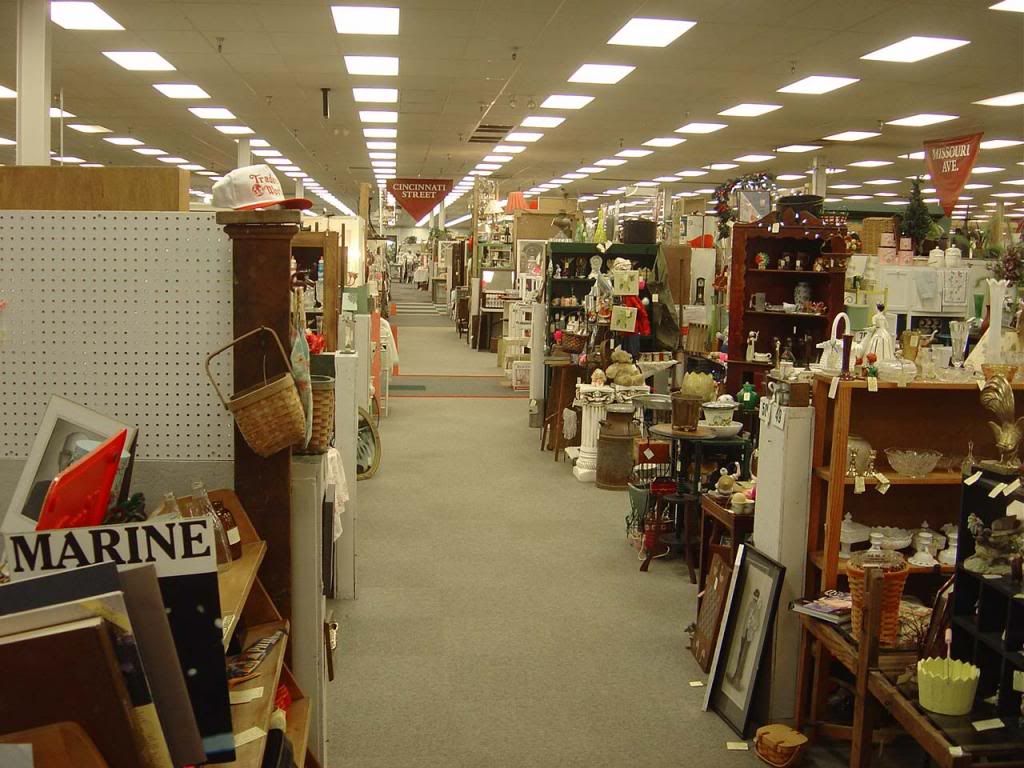
My first sighting was this Royal, KMG-4170416 (made in 1950 according to
The Typewriter Database), for a mere $22. It's dirty but works.
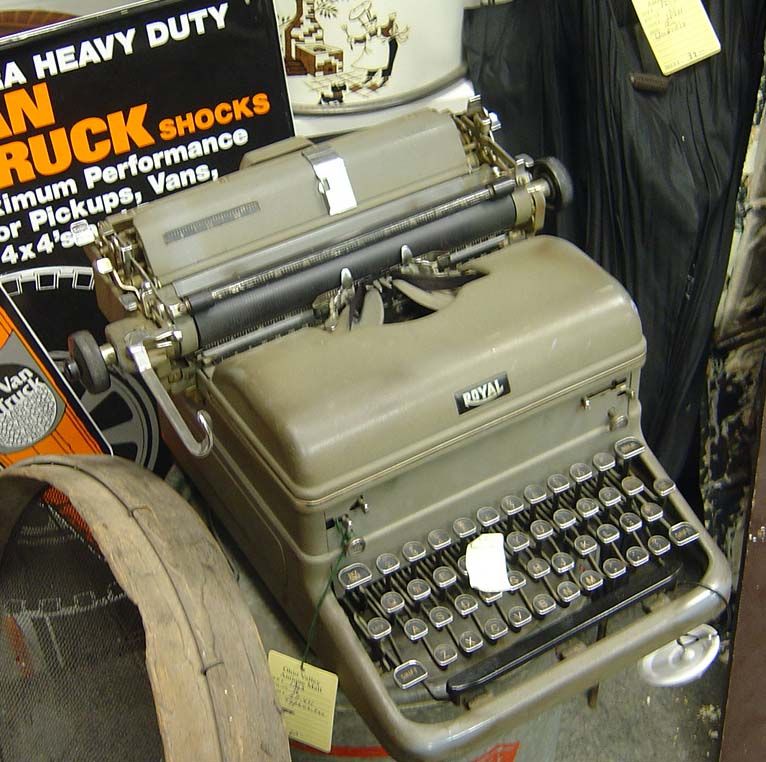
Nearby, this Woodstock missing the ribbon cover was jammed into a corner and I didn't want to wrestle it out to find the serial number.
Looks like a 1940s Woodstock Standard. The price? $60.
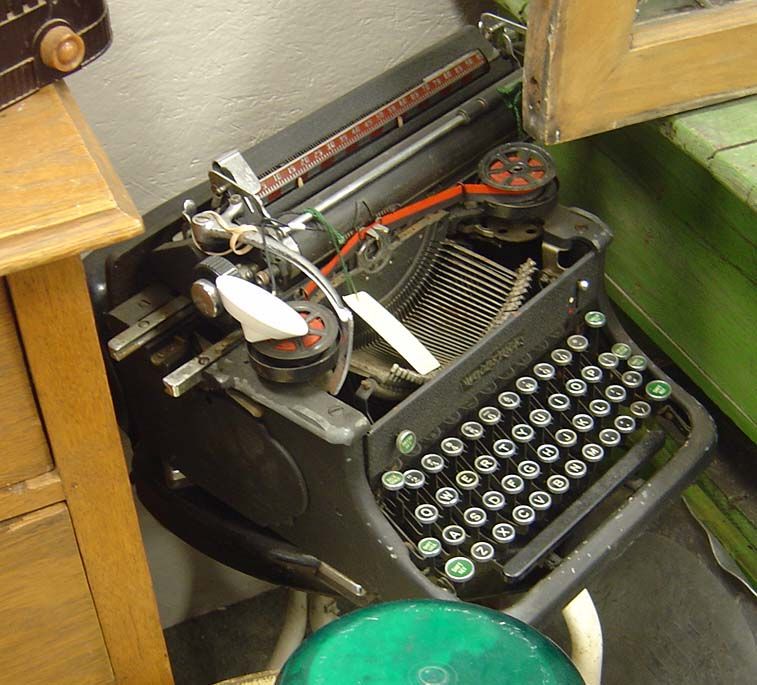
Here's an antique! Oliver no. 3 #123572, circa 1905. They wanted $100 for this one, which seems fair but not a huge bargain, given the typically rough condition of the typewriter (chipped spacebar, worn nickel, rust).

Two toys: a Tom Thumb for a stiff $95, and a Unique "Dependable" for $29.
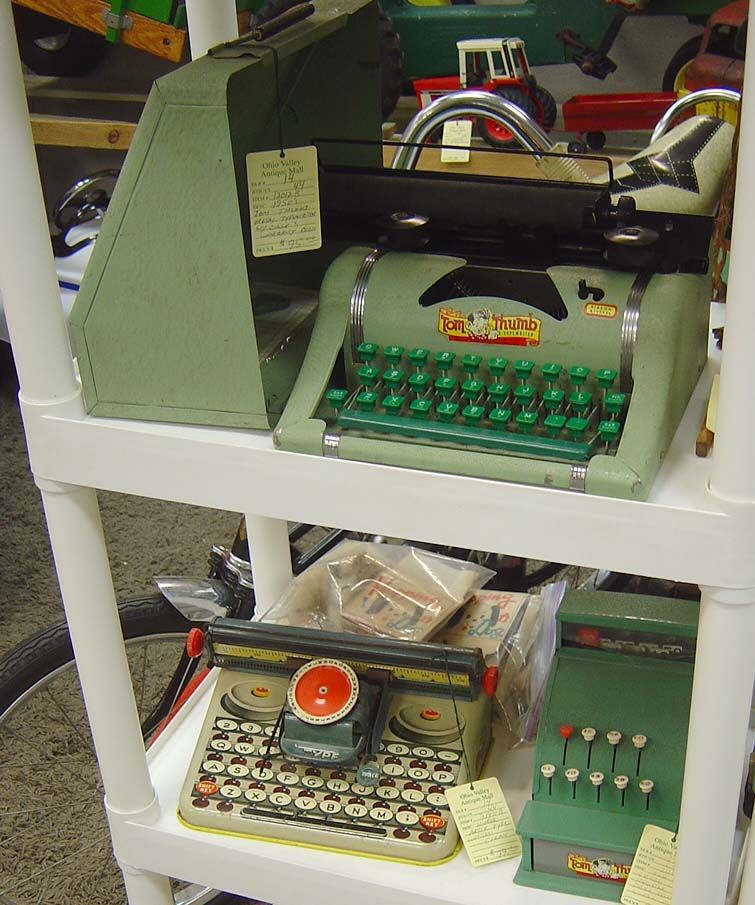
What
might justify the price on the Tom Thumb is this unusual paperwork that came with it. I whipped out my spy camera and took these shots.
You can also have the operating instructions as a PDF here.
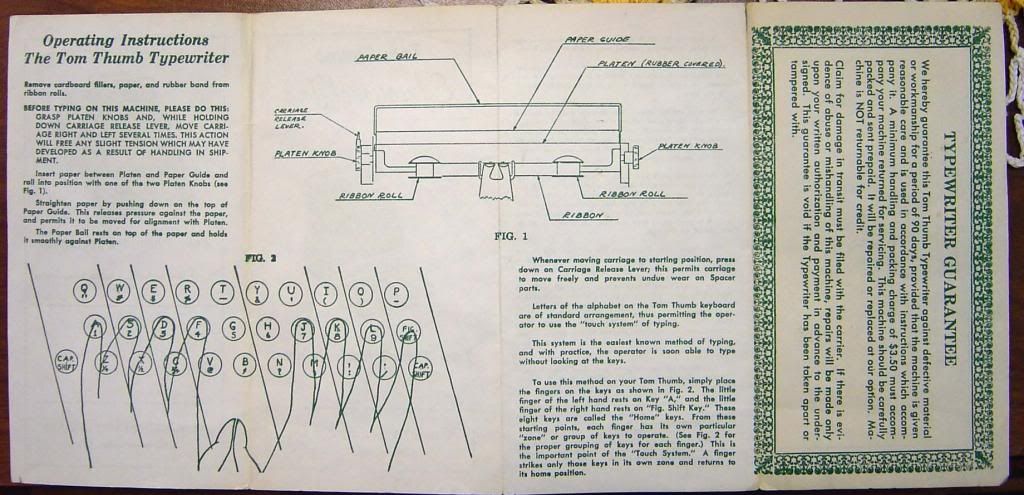

What's an antique store without an Underwood no. 5? This paint-speckled specimen (#719181, made 1914 but labeled "1930's era") had a price tag of $179.95.
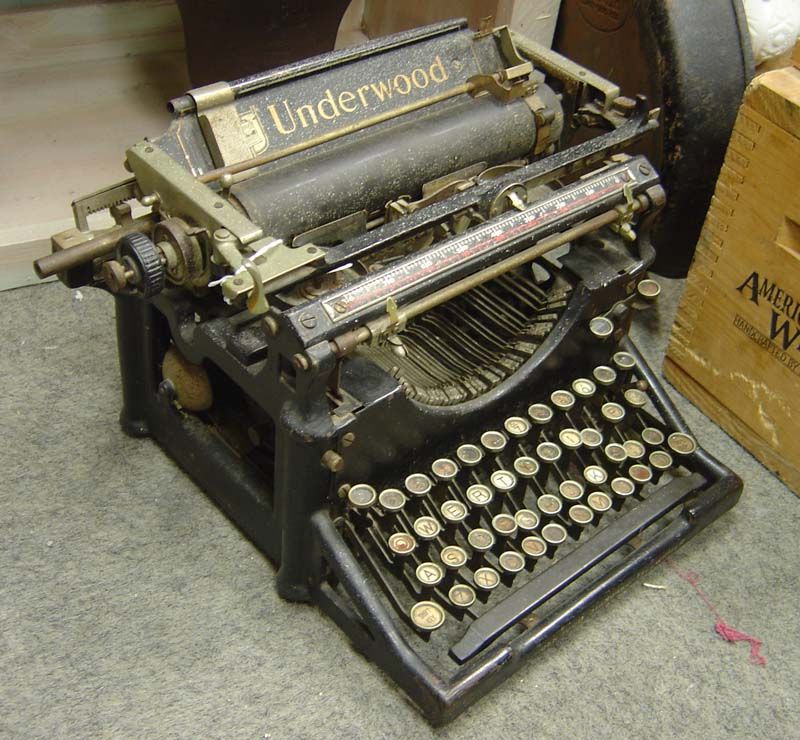
This unattractive typewriter might actually be the rarest one I saw. I don't recall spotting another before. It's a Smith-Corona Courier C/T, made in England. C/T stands for "Correction/Typewriter." Yes, they expected you to use one of those ribbons with the correction tape on the lower half, which eventually get flaky and muck up your mechanism. Aside from the wide carriage and the particular style of plastic housing, this is the same old ultraportable mechanism first introduced in the '30s on the Zephyr, then made famous by the Skyriter. Construction is flimsy, as on all these late mini-Smith-Coronas. I could not find a serial number. Price: $24.95.
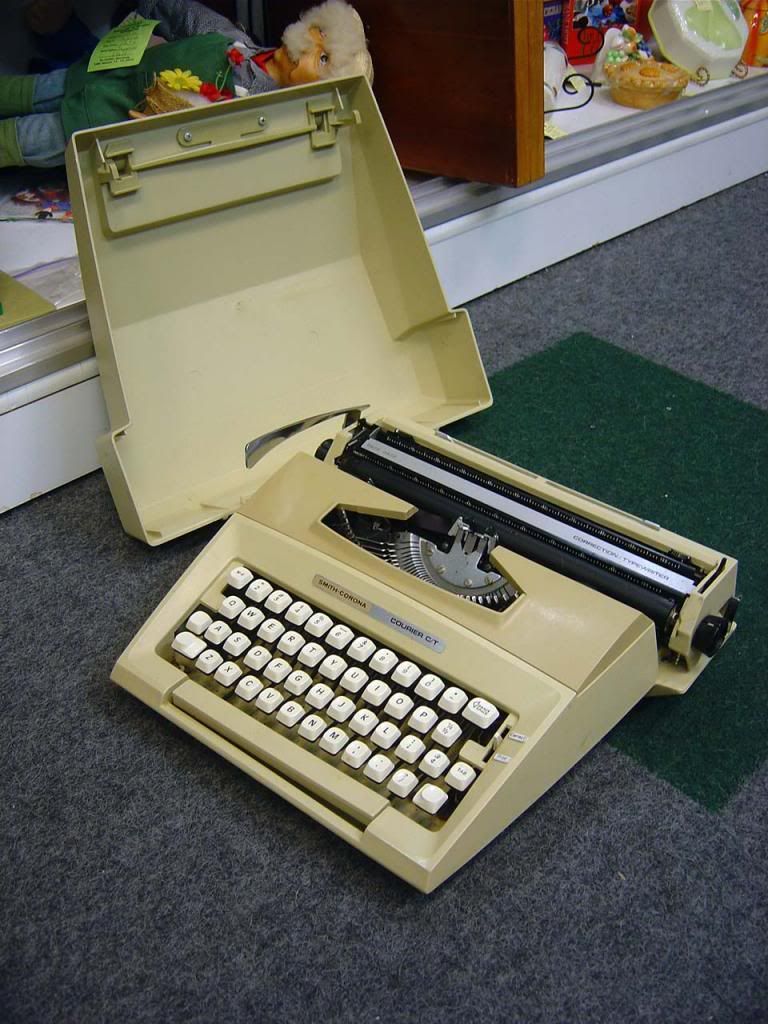
Ouch. Just ouch. This battered '50s Underwood was so rusty and jammed that I couldn't check its serial number. They wanted $24.99 for it. I thought about taking it for parts (
the similar Underwood I recently cleaned up for WordPlay is missing its front panel).

Here's another English-made Smith-Corona, in the unmistakable aqua color. The owner of this booth was asking $120 for this Corsair.

Here's a Hermes Baby Featherweight (#85862, made in 1936, the second year of production); price $49. Two shelves below is a Marx Dial toy for $59.
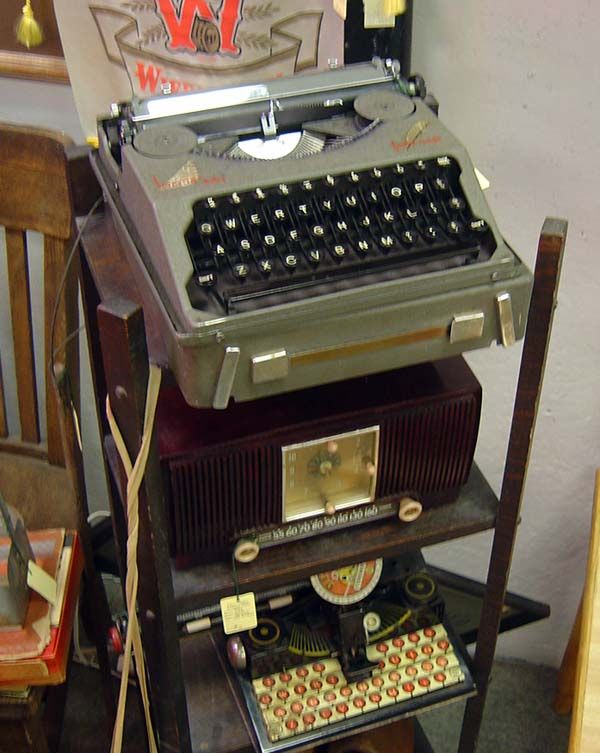
The price for this nearby Royal Safari was $49.
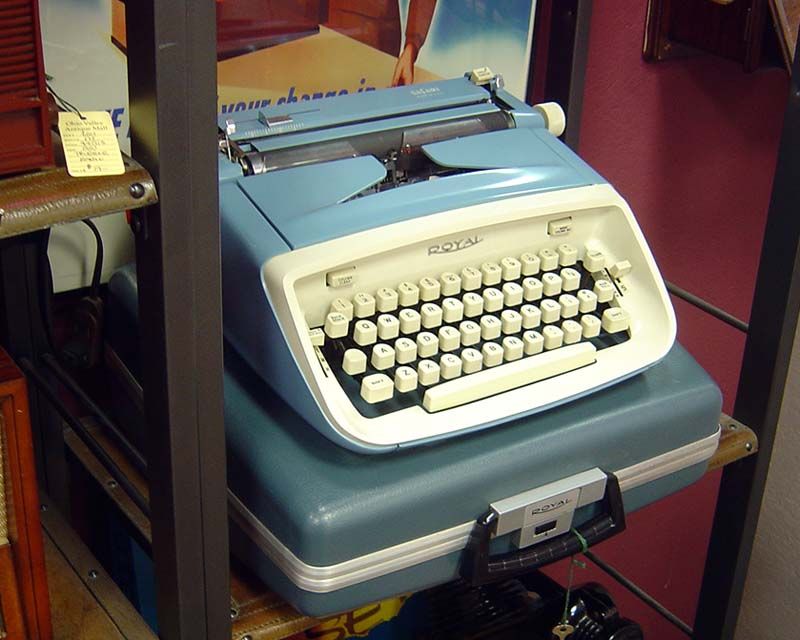
The machine is practically like new, and even includes this original mini-brochure.
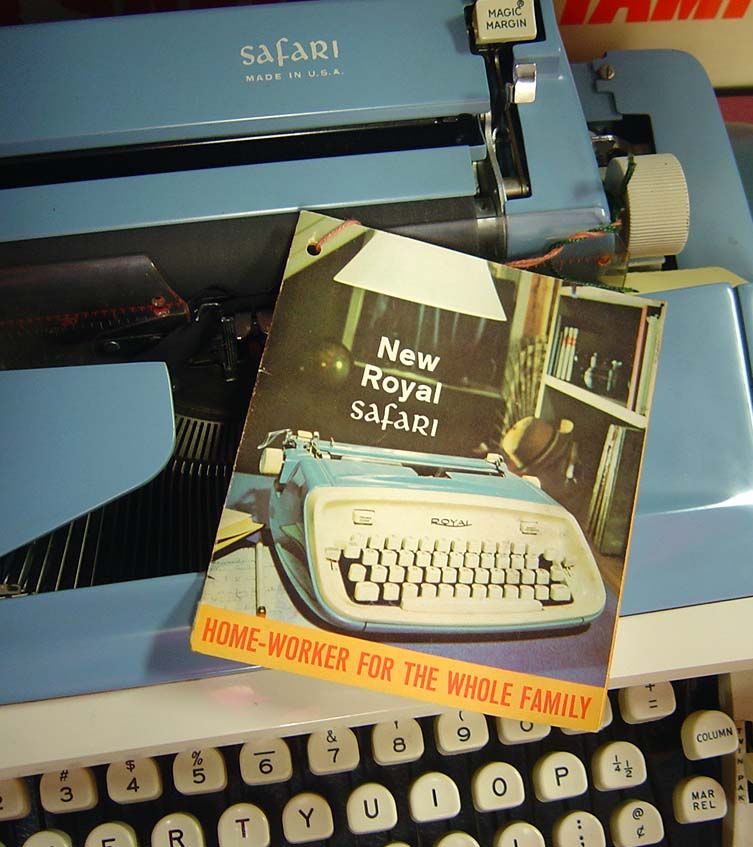
Let's take a moment to delight Adwoa.
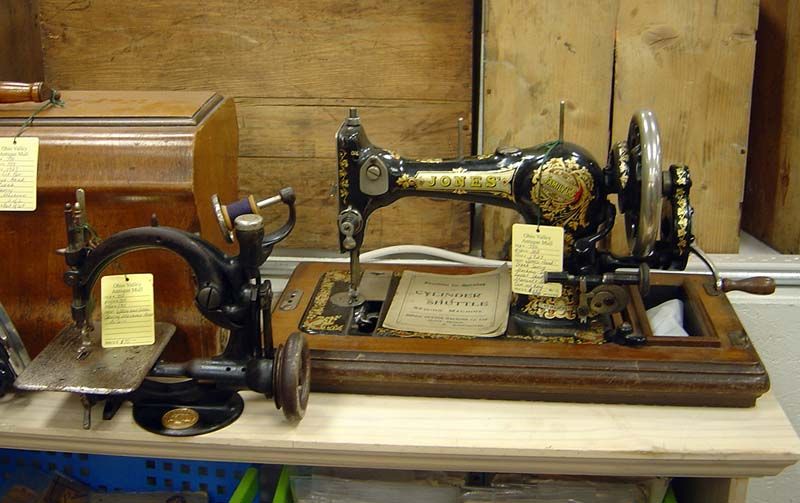
Now back to the typewriters: a Royal Administrator electric for $55, reduced to $40.
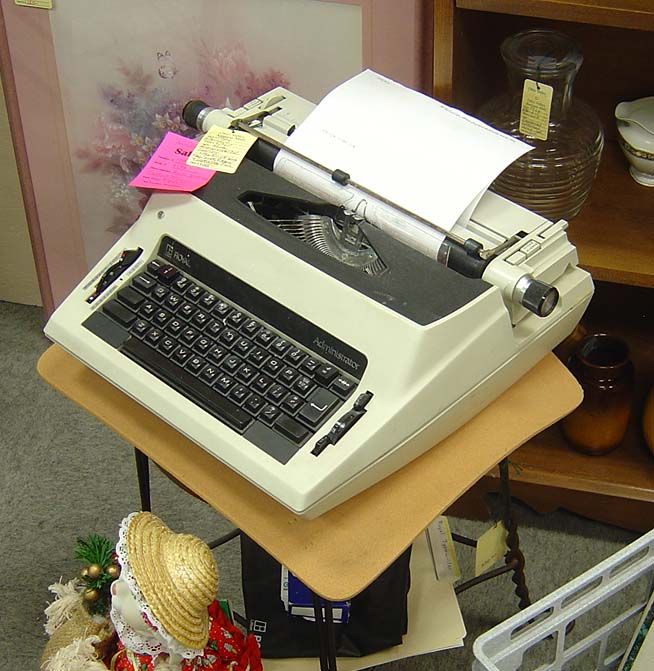
Here's an Olympia SG-1, dirty but functional, for $29.99! As usual, the plastic paper support has broken off.

This Tom Thumb in a display case is $45.
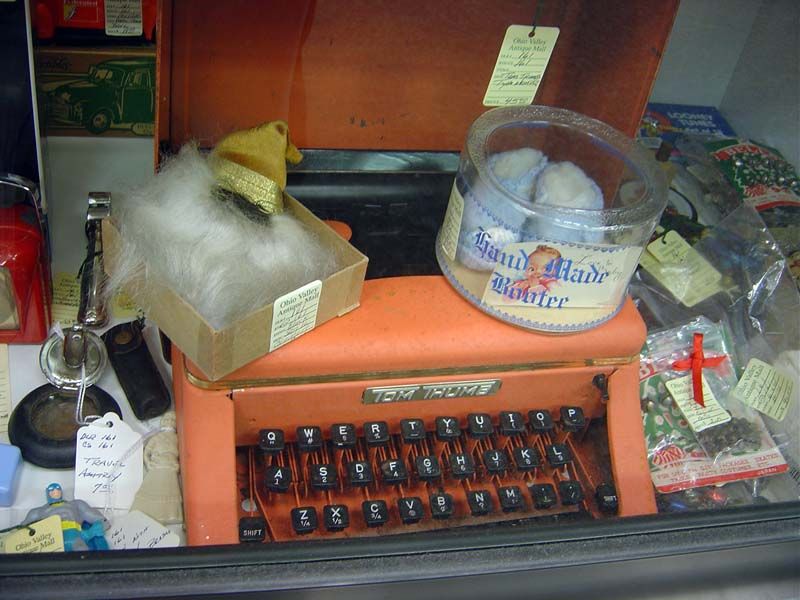
And finally, I spotted a Smith-Corona Sterling for $20. "Needs work" according to the label, but the only thing wrong I could find was a twisted ribbon.
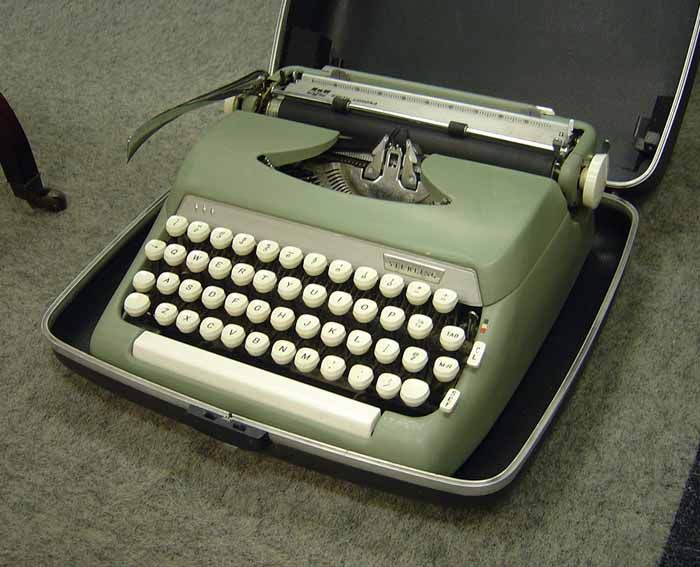 Now for the game
Now for the game: can you guess which two of these typewriters I took home with me? The answer will be posted in the comments in about 48 hours, and the first person who guessed right (if anyone) will get a postcard from me by postal mail.
